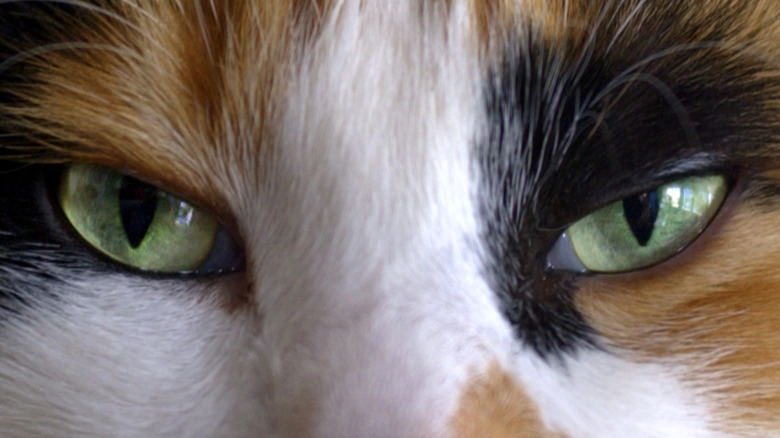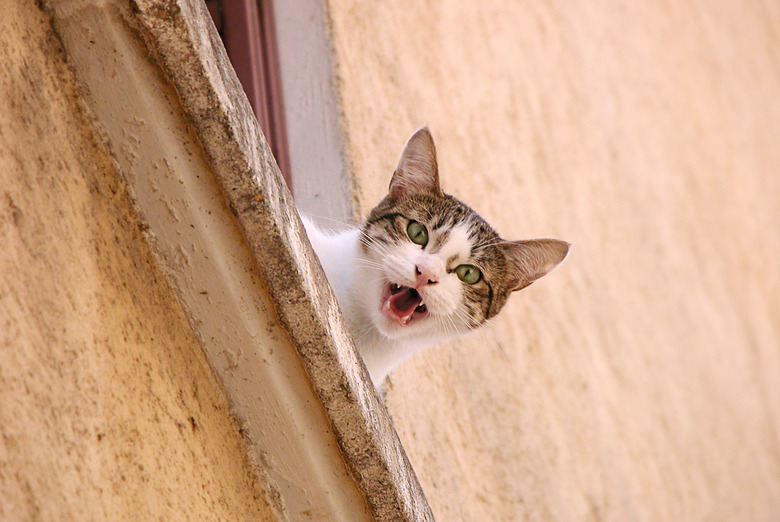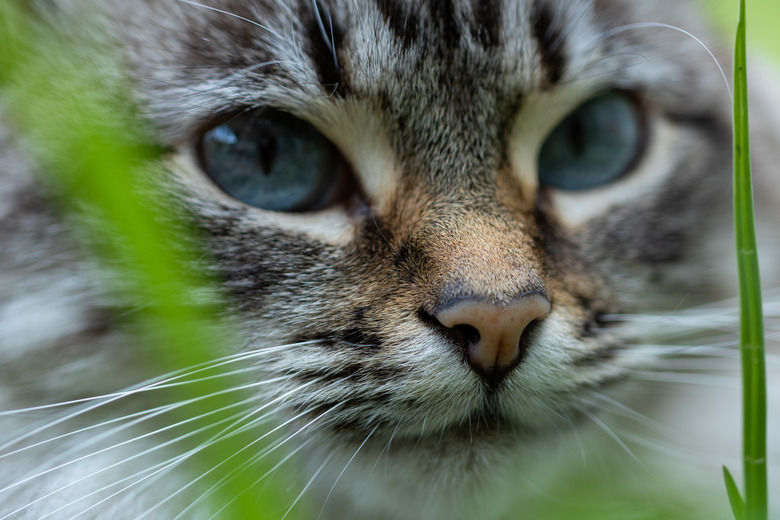Why Is My Cat's Eye Watering?
If your feline friend has a watery eye, it could be a minor irritant or a vision-threatening condition. It's normal for a cat to have a small bit of discharge after a night's sleep, but a constant discharge or green or yellow discharge requires a trip to the veterinarian. Any eye problem is a potential veterinary emergency. Your veterinarian will examine the eye and conduct tests to determine the reason for the discharge.
Why are my cat's eyes watering?
Why are my cat's eyes watering?
There are numerous reasons your cat could be experiencing watery eyes or ocular discharge, and it's not possible to determine the cause just by looking. Your veterinarian will perform tests to figure out the condition that is causing your pet's eye issues.
Allergies in cats
Just like humans, cats can be allergic to a myriad of things, including environmental allergens like pollen, certain foods, and even other animals. One of the most common signs of allergies in felines is excessive tear production. The eyes might also be itchy, and your cat might paw at their face as a result. Your veterinarian might prescribe a strict special diet (such as a protein they've never eaten before or hydrolyzed protein) or allergy medications aimed at alleviating watery eyes and ocular discomfort.
Foreign object in a cat's eye
Dirt, splinters, plant matter, and cat litter can get stuck in your cat's eyes and be the cause of your cat's watery eyes. If there is a foreign object lodged in your cat's eye, they will experience discomfort, so you might also notice them squinting, pawing at their eye, or rubbing their eye on different surfaces, which can result in a secondary infection. The affected eye might also appear red and inflamed.
If you are concerned that your pet might have an ocular foreign body, it is important to consult your veterinarian, who will do a thorough ophthalmic exam. They might try to flush the object out of the cat's eye using a cat-safe eye rinse. In the case of a large, embedded (intraocular) foreign object, your veterinarian might recommend surgery.
Feline upper respiratory infection
If your cat is also sneezing or exhibiting signs of a runny or blocked nose along with a watery eye, they are probably suffering from an upper respiratory infection. Common causes include two viral infections, feline herpesvirus and calicivirus, and the bacteria Chlamydia felis.
Your veterinarian might take a sample of the eye or nasal discharge to determine the culprit. If Chlamydia felis is the cause, your veterinarian can prescribe antibiotics to fight the infection, but these medications don't work against viruses. If there's a bacterial infection secondary to a virus, they might prescribe antibiotics for that purpose. Your veterinarian might prescribe topical antibiotics for the eye infection, but other treatment consists primarily of supportive care. You can have your cat vaccinated against these infectious agents, although the inoculations don't provide 100 percent protection.
Conjunctivitis in cats
Commonly known as pinkeye, conjunctivitis (inflammation of the conjunctiva, or mucous membrane lining the eye) is not a disease in itself, but it can indicate an eye condition. It is sometimes a sign of a serious eye disease, such as uveitis or a corneal ulcer. At other times, it's just a mild infection of the conjunctiva lining the cat's eye and soon heals with topical antibiotics.
In addition to the discharge, cats with conjunctivitis might have inflamed eyes that look swollen with pinkish eye whites. Uveitis and corneal ulcers are quite painful, so your veterinarian might prescribe medication for pain relief. A corneal ulcer might require surgery, while some cases of severe uveitis can cause secondary conditions, like glaucoma or cataracts, which might also require surgery.
Epiphora in cats
Epiphora, the technical term for excessive tear production, can result from blocked tear ducts, but that's not the only cause. Symptoms include constant wetness beneath the eyes, possibly with red staining. The discharge can smell and eventually cause a skin infection. Because of their facial structure, Persians and Persian-type cats often suffer from improper tear drainage. If your veterinarian rules out other causes for the epiphora, such as conjunctivitis, they can flush out the tear ducts while your cat is under anesthesia. If the tear duct opening is too small, your veterinarian can surgically widen it or place a stent.
Keratoconjunctivitis Sicca in cats
Colloquially known as dry eye, keratoconjunctivitis sicca (KCS) occurs when the conjunctiva and cornea become too dry. Some of the symptoms are similar to conjunctivitis, but you might also see the "third eyelid" in the affected eye. Without treatment, KCS can cause corneal ulcers or even blindness. Your veterinarian will conduct the Schirmer tear test to determine eye lubrication. Treatment consists of daily artificial tear applications to the eye along with topical antibiotic if an infection is present and medication that stimulates tear production.
What to do when my cat has watery eyes
What to do when my cat has watery eyes
If your cat has excessive eye discharge, you can provide some at-home relief by gently cleaning the area around the eyes with a washcloth and warm water, applying a warm compress, or carefully flushing the eyes with an eye wash solution that your veterinarian recommends. However, it is also important to seek veterinary care for your cat, as the veterinarian is the only one who can perform the proper tests to determine the cause of and appropriate treatment for your cat's watery eyes. Seeking veterinary care in a timely manner can help alleviate any discomfort quicker as well as prevent or lessen permanent damage to the eye.
The bottom line
The bottom line
Watery eyes in felines can be attributed to a variety of causes, including a virus, a bacterial infection, or a foreign object in the eye. You can gently clean the area around the eyes or apply a warm compress to alleviate any discomfort, but you will also need to take your cat to the veterinarian as soon as possible. Your DVM can perform a variety of tests to figure out what is causing your pet's runny eyes. Depending on the cause, treatments vary from prescription eye drops to surgery in extreme cases.


